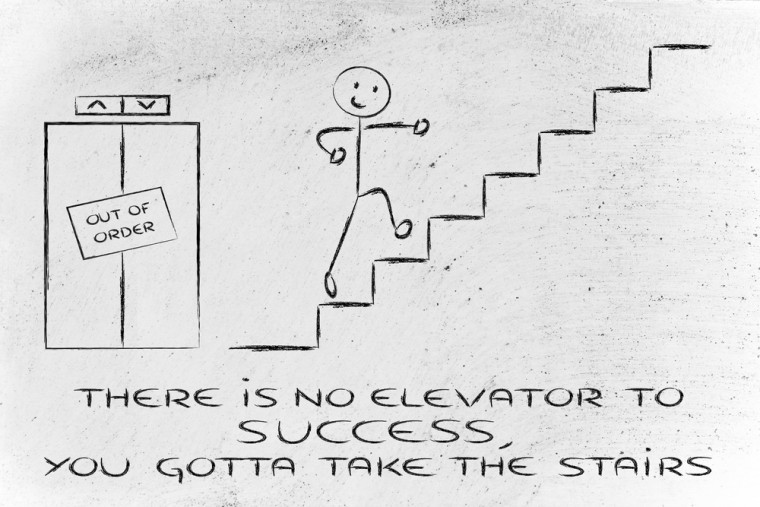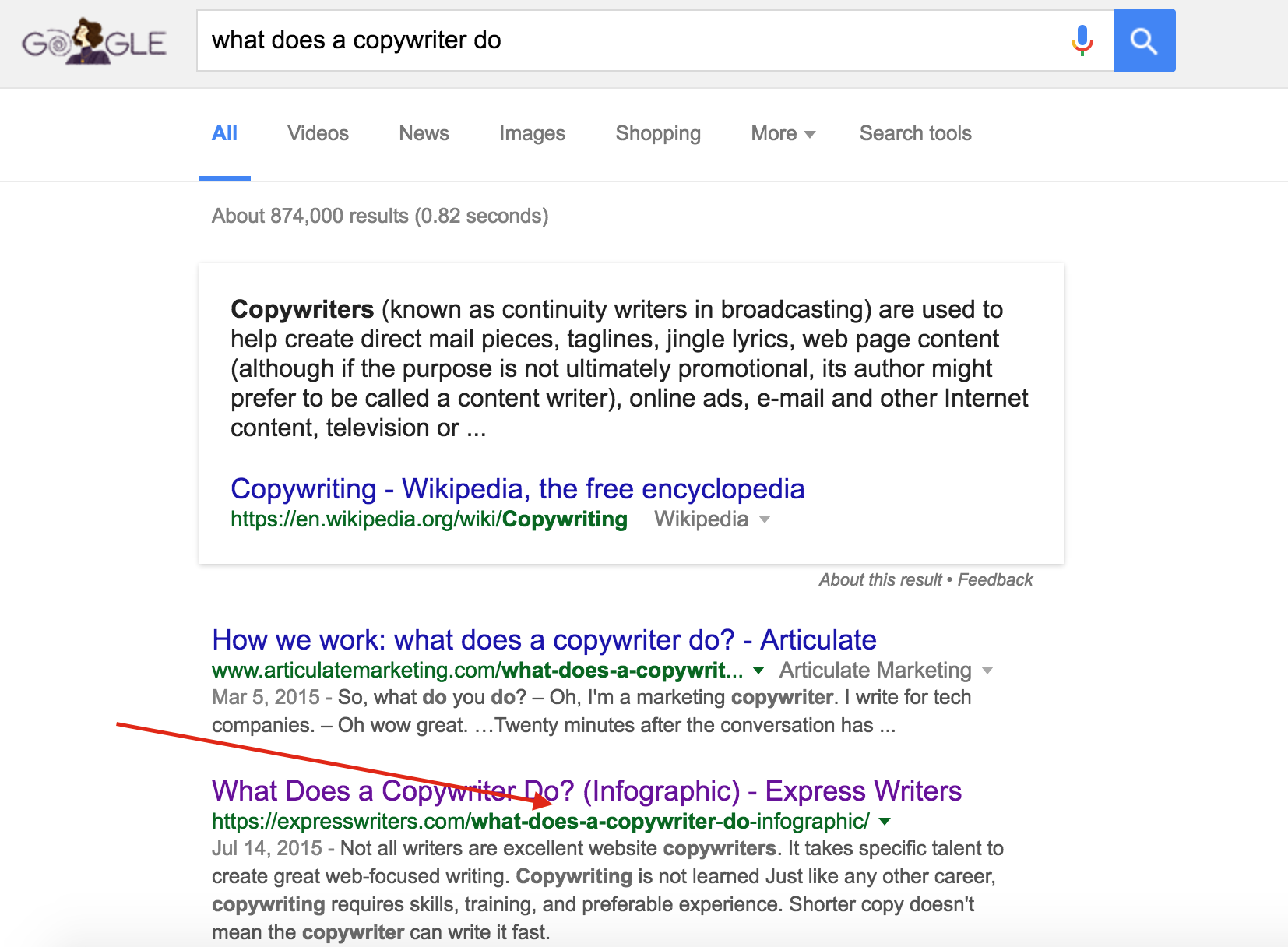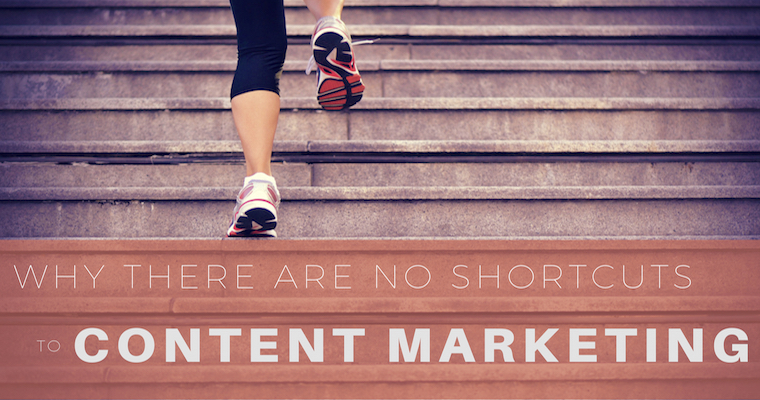I’m going to be honest with you right now: if you’re considering starting content marketing or “trying” to do it, and it’s not working, here’s something you should realize.
Content marketing is like a newborn baby. It needs plenty of nurturing.
A great content marketing strategy needs care, attention, and loads of patience. It needs persistence. It isn’t short term. (And I have a two-year-old, so I know what I’m talking about.)
Content marketing is not a quick fix to any problem your brand or business faces. Rather, it takes time to see a return on content marketing efforts and we’ve seen too many companies who don’t want to wait for the return.
Why Content Marketing Isn’t a Quick Fix or an Overnight Success
Content marketing is massive for businesses and it is crucial, vitally crucial, to stick with it to see results.
If you’re not convinced that content marketing is something to be nurtured and invested in, it may be that a few things need to change for you. Let’s define those.

Tip #1: Why Your Content Marketing is Failing
For many businesses, their content strategy comprises posting to their blog now and then, or quickly typing up a Facebook post in the hope that it will be shared. These are the same companies who expect high returns for their minimal, rushed efforts.
Content marketing doesn’t work this way. It requires constant content generation and planning, along with a process for implementing a strategy. This is why many businesses fail at content marketing.
Companies are failing to holistically internalize their strategies. The strategy isn’t cohesive between the various departments in the business. Too many businesses only go as far as planning big goals that can be achieved by the end of the year, or even the quarter, instead of carefully going through the steps that should be taken to achieve such goals. So come the end of that year or quarter, companies wonder why they failed with their strategy—and it is because they never really had one to begin with.
Tip #2: A Process Will Help You Achieve a Goal
I’ve said it before, but I’ll say it again: content marketing isn’t a short cut or quick fix. There needs to be a gradual improvement within your content marketing strategy for it to reach its goal.
By imposing smaller, more achievable changes, your company can set more realistic and obtainable goals. With this method in place, progress will be made over time, building up to that final end goal.
Here’s my rough process schedule for publishing:
- I research my audience and what they’re talking about, using tools like BuzzSumo
- Weekly Skype meetings with the staff to brain dump on new content ideas together
- For good content topics ideas that will rank in Google, I research viable long tail keywords (see my article on Content Marketing Institute for a nutshell guide)
- Load all my ideas into a Google doc—then share with my team and brainstorm further
- Set easy-to-hit publishing dates; I never publish on short, crunched timeframes
- Commit to my dates
By producing content over a longer period of time, you will notice improvements in the quality of the content. It takes some time for the benefits of content marketing to become apparent. Maintaining consistent content marketing efforts can help you to achieve marginal gains each and every day and that, in turn, will accumulate into a good deal of progress over time.
Tip #3: See Your Progress Stay on Track
Working on smaller goals every day is essential for keeping track of the progress made towards those larger goals. Content marketing isn’t what it used to be. By focusing on the strategy one day at a time, you are bound to see immense gains in the long run.
Debunking 5 Content Marketing “Shortcuts” (& Why They’re Not)
We’ve established that building a content marketing strategy simply isn’t effective when you cut corners.
But according to a variety of studies by CMI, while just about every company is practicing content marketing, a massive 70% of those companies are doing so without first coming up with a content strategy. What?
With our own content agency clientele base, I’m getting more and more requests from businesses who need help building their content strategies. However, with those requests come pleas for shortcuts and corner-cutting. Quick fixes are certainly appealing. And I know that everyone, especially business owners, have to work within time and budget constraints. Yet it’s also true that strategies don’t just happen. A content marketing strategy is based on resource requirements, goals, and a range of other branding and marketing activities.
Here are five of the most frequently asked-for content strategy “shortcut” requests I get—and why they are not actually shortcuts.
1. The Content Audit “Shortcut”: Why it’s Never That
Many times, our content clients are quick to say they don’t need a content audit. However, unless you have been conducting these audits yourself, you really do.
Even a basic audit forms the cornerstone of any content marketing strategy. You simply cannot chart where you are headed unless you know where you are right now. A content strategist will study the content, where it is going to be published (the channels), the analytics and metrics around it. They will also learn how the content is created, produced, reused, and interacted with.
The audit isn’t only about what’s there, it’s also about what’s missing. See how it’s not a case of penning a quick blog and posting it?
Audits should be conducted at least twice a year. Once the basic audit has been done, you’ll have a better understanding of how to move forward with your future audits. So, really, an audit is the gift that keeps on giving.
Here’s a guide I wrote a few months back on doing a content audit. You’ll see very quickly that an audit is a painstaking, troublesome thing—no shortcut at all.
2. The Content Marketing Process “Shortcut” and Why It’s the Opposite
All too often businesses will proclaim, “we create content already, so process isn’t an issue”. But it could be. Content marketing strategies are about process. It’s not just about coming up with a couple of goals and benchmarks for your content. Equally, content strategy is about how your goals can be achieved with repeatable processes.
Efficient processes essentially lead to substantial savings of money and time. Ignoring the process when it comes to creating your content strategy is a surefire way to create money and time inefficiencies.
3. You Can Hack all the Roles in Content Marketing “Shortcut” Debunked
No one person can “hack” and become the end-all, be-all in what it takes to truly fulfill content marketing for a brand.
We often hear that a company doesn’t have the budget to hire new staff, so they see no point in evaluating roles. Be that as it may, people, like processes, cannot be ignored in your content marketing strategy. A good person is vital to the strength of your content marketing. These people include:
- Core copywriters that match your expert industry (don’t hire a general writer if you’re a tech company)
- Editors to proofread and catch any flow errors before it goes out
- Social media managers to market and promote all your content on social media
- Designers and content managers to create visuals for and oversee the process
There’s no one shortcut to fulfilling these roles. Try to do all the roles yourself, and you’ll be overwhelmed very soon.
4. Just Tell Us What Kind of Content Will Work for Us “Shortcut” Debunked
This is one I come across often. It’s a shortcut both in and of itself.
I wish I could tell you what content will work for your business, just like that. From a strategy standpoint, I probably can tell you what content will work this week, this month ,or even this quarter. But longer term, I just don’t have a crystal ball that will automatically conjure the very best content and place it in the perfect channels to reach the perfect audience.
“What content will work for me?” is something akin to “produce me a viral video”. There’s always going to be somebody out there promising the moon and cashing in your check, but that is not what a content strategy is about.
What a content strategy does is teach you how to learn what content is going to work against your unique goals and how to realign the content for different audiences, channels, products, projects, and even external forces. Different content works during the holiday season. Different content works when there’s breaking news in your industry. Different content works when customers are talking about your brand. Different platforms work for different audiences. Find your sweet spot; don’t settle on one just because it looks like a “quick fix”. Take the time to find where your audience lives.
5. Hitting Google’s Sweet Spot: There’s No Shortcut to it, Just Good Content Marketing
We all know about Google and their ever-changing algorithms. This affects your content strategy and reach, too, which in turn requires patience and persistence (never, ever a quick fix). Quick fixes went bye-bye when Google cracked down on the last spammer.
Here’s an example of how patience has paid off with our own content marketing strategy:
Personal Case Study: 9 Months to Achieve a Top #2 Ranking in Google
Last July, 2015 (yes, almost one year ago) we published an infographic “What Does a Copywriter Do” trying to rank for that long-tail keyword. We saw the ranking slowly climb over a course of nine total months. Now, nine months later, we’re in the first two organic keyword spots for that very keyword in Google—plus ranking for a few other synonymous long tails.

We won—but it took a very long time!
Conclusion: Think of Your Content Marketing With Strategy, Patience, and Nurturing
Content marketing is not hocus-pocus magic. It’s more of a “teach a man to fish” scenario. The purpose of your content marketing strategy is to develop repeatable, sustainable processes that are aligned to higher business goals.
Your content is invariably going to change. The bigger strategy? Not as much. Don’t be discouraged easily, and refine and perfect as you go: you’re bound to see amazing results, even though they may not be overnight.
Image Credits
Featured Image: Image by Julia McCoy
In-post Photo: faithie/Shutterstock.com





